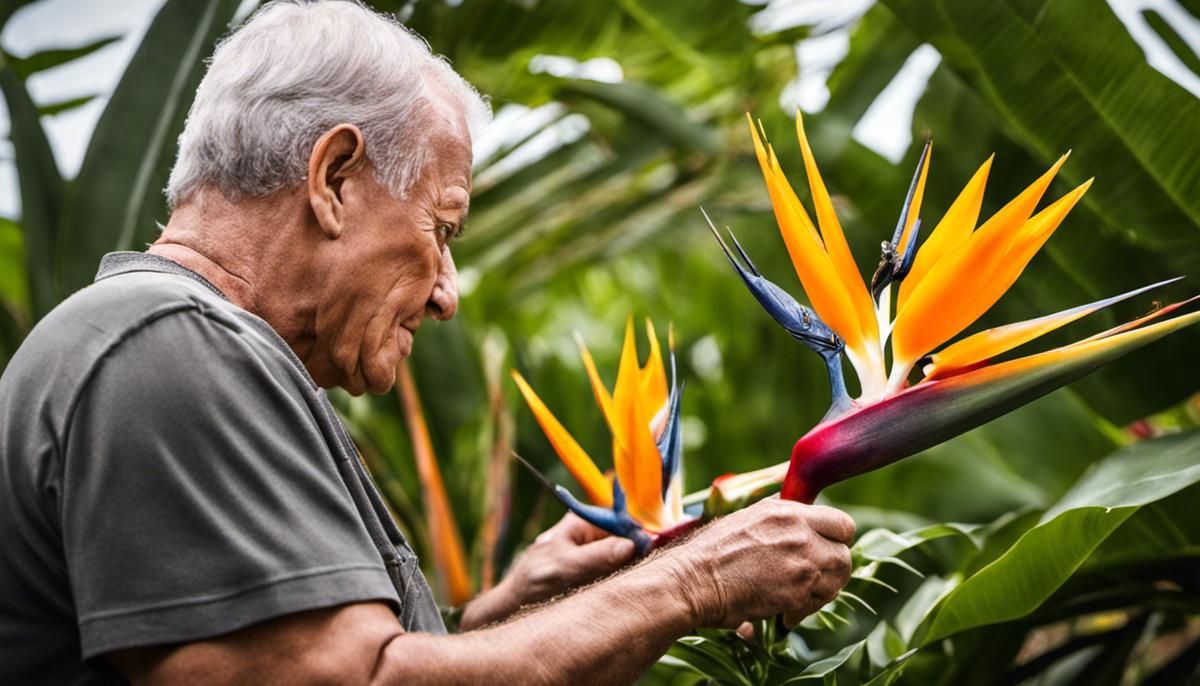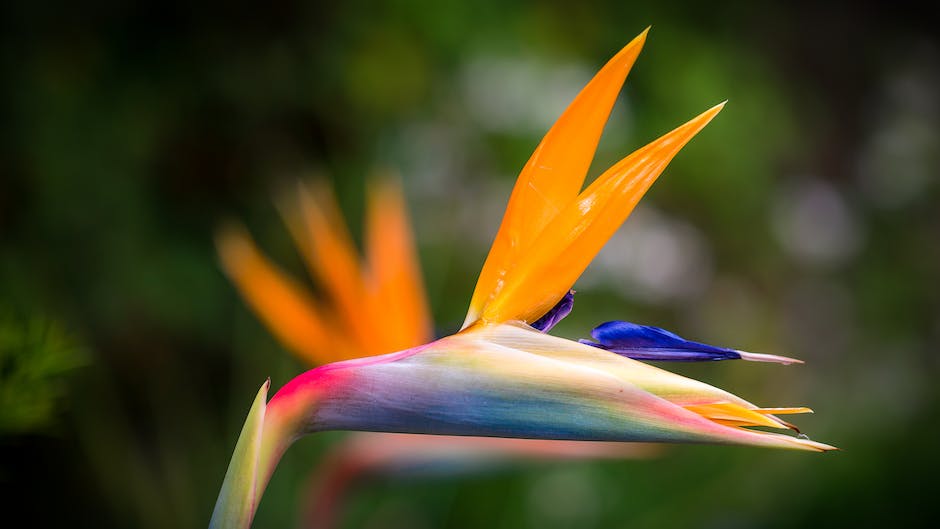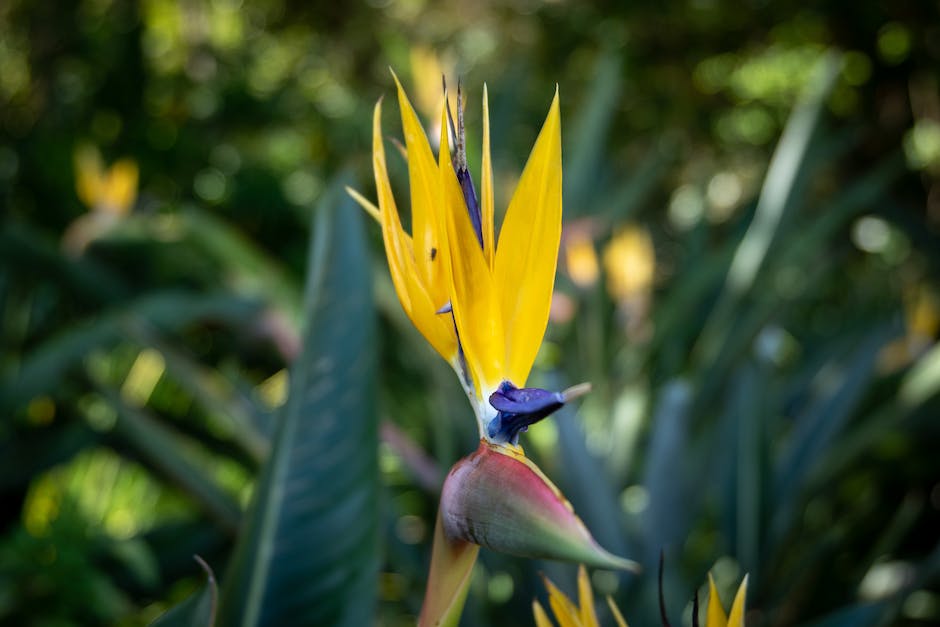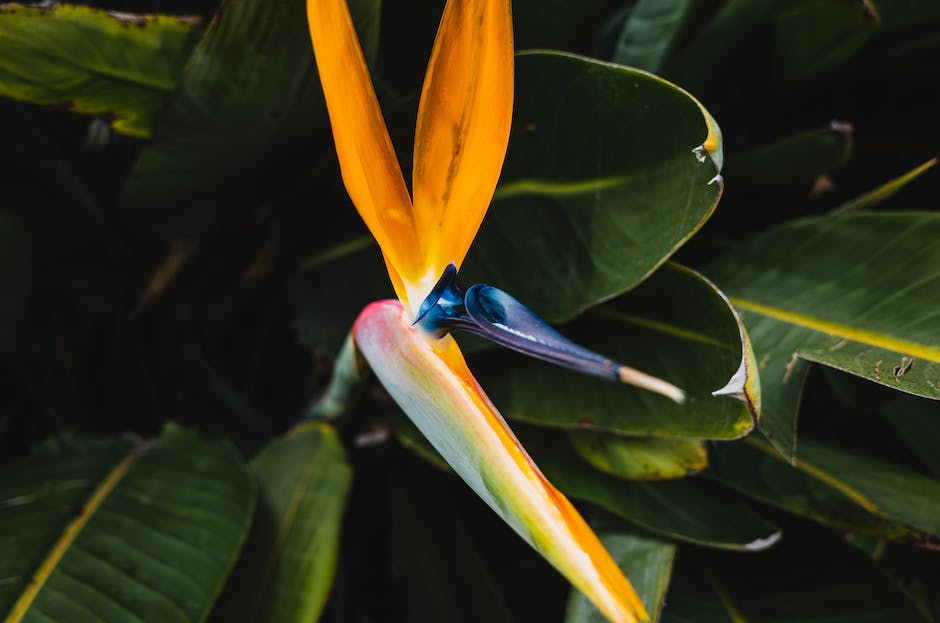Uncomplicated Guide to Bird of Paradise Pruning

Nature has bestowed us with numerous beautiful plants, showcasing their vibrant colors and unique shapes. Among these, the bird of paradise stands as a manifestation of tropical beauty, with its splendid colors and exotic floral structure. However, it requires meticulous and well-informed care to maintain its vibrant radiance. This includes knowing the optimal time for pruning, correct techniques to carry it out, and post-pruning care to sustain its health and stunning display. Pruning is a significant practice not only to enhance the plant’s aesthetics but also to ensure its health by eliminating dead or diseased parts.
Identifying Pruning Time
Nurturing Nature: The Right Time to Prune Your Bird of Paradise
Hello enthusiasts, let’s uncover some gardening secrets about one of nature’s most vibrant flora, the Bird of Paradise. This tropical plant, bursting with an explosion of bright colors like orange, blue, and green, adds a touch of unique beauty whether it’s adorning a garden landscape, brightening a patio or creating an indoor tropical haven.
But before diving into the heart of the topic, let’s clarify something: Pruning isn’t about hacking away at random. It’s an art that requires precision and a deep understanding of plant growth. But fear not! Everyone can learn it, and the magnificent Bird of Paradise plant deserves a loving hand tending to it.
Timing is crucial. So, let’s answer the essential question: when is the best time to prune a Bird of Paradise?
Though they are relatively relaxed and resilient, Bird of Paradise plants has a specific ‘pruning season’. The best time to prune this tropical beauty is late spring or early summer. This timing provides an appropriate interval before the growing season of summer, promoting healthier and more vigorous growth.
However, this time frame isn’t just a simple suggestion to follow blindly. Each plant’s needs could slightly vary depending on its overall health and specific location’s climate conditions.
But why late spring or early summer? During these seasons, the plant typically blossoms and grows new foliage. Post blooming, the plant needs some room to breathe and grow. Removing the old stems and leaves allows the plant to direct energy towards new growth, ultimately leading to the spectacular blossoming of the most stunning flowers and the lush foliage the Bird of Paradise is revered for.
Now, it’s crucial to remember that pruning isn’t a casual act of chopping down anything in sight. It involves carefully inspecting the plant for any old or damaged parts. By cutting these parts, the plant can refocus on nurturing the healthy bits.
Keep a keen eye out for any brown leaves or dead stalks. Use a sharp, clean pair of pruning shears (safety first, remember?) to cut them off; it will not hinder the plant’s growth but, rather, make it sprout new, healthier branches.
A note on technique: Always cut as close to the base as possible. Make the cut clean and sharp, to minimize damage and reduce the risk of disease affecting the plant.
To keep the Bird of Paradise plant looking its best all year round, regular clean-ups are necessary. Remove spent blooms and dead leaves—which is not technically pruning but maintains the plant’s overall health and aesthetics.
The joy of watching a Bird of Paradise thrive under committed care is hard to explain. The lush green leaves and the beautiful flowers seem almost a reward for the precise tending care. And when that vibrant bloom unfurls under the warm sun? It’s like watching your own tropical bird take flight. Keep pruning, keep nurturing, and enjoy the spectacular natural show!

Pruning Techniques
Now that you’ve got the basics down, it’s time to move forward and master the intricacies of Bird of Paradise’s pruning techniques. It’s crucial to address some remaining elements that can greatly contribute to the flourishing and survival of this delightful plant.
We talk a lot about the ‘how’, but what about the ‘what’? You know that you need to prune in late spring or early summer, but understanding what to prune off is equally important. When pruning, be sure to eliminate diseased leaves and broken stems. If you notice any brown or yellow leaves, they too should be removed. These are signs of aging, damage, or disease and could stifle the overall growth of your Bird of Paradise.
This brings us to the tools. Always use sharp, clean shears to make your cuts. This results in less trauma to the plant and reduces the risk of infection. It might be tempting to use a cheaper alternative, but trust us—investing in a good pair of pruning shears will yield dividends in the long run for your botanical hobby.
Don’t forget the value of sterilizing your tools before moving on to another plant or even between cuts, especially if you’re dealing with fungal infections or pests. Quick sterilization is as easy as a swipe with rubbing alcohol or a dip in a solution of water and bleach.
Also, protective measures are not just for the plant – they are for you too! A pair of sturdy gloves will protect your hands from sharp leaf edges and sap. Do not neglect these precautions as the juice from the cut stems can cause skin irritation.
It’s essential to remember the ‘less is more’ principle when it comes to watering your Bird of Paradise post-pruning – overwatering can lead to root rot. After pruning, your plant’s water requirements reduce significantly as the plant has less foliage to support. Adjust your watering schedule accordingly and ensure that excessive moisture isn’t pooling around the base of the plant.
Last but not least, always encourage new growth post-pruning! One often overlooked aspect is a follow-up with a balanced, slow-release fertilizer. Apply the fertilizer to the soil at the base of the plant to give it that much-needed nutrient boost.
Embrace the trimming process and see it as a therapeutic routine. It’s a time of care and nurturing, and also a moment of symbiosis, where both parties benefit from each other. Just remember, the Bird of Paradise may not talk back, but it definitely reciprocates! Through these careful practices and committed care, your Bird of Paradise can thrive, making your space a veritable tropical oasis.

Post-Pruning Care
Once the pruning process has been completed for your Bird of Paradise, there’s still plenty to do to ensure optimal health and growth. Just as important as the things that were cut away are the measures to be taken following the pruning. This is where your plant’s recovery and rejuvenation period begins.
Post-pruning, keep a keen eye out for leaves or stems that may develop signs of disease or breakage. If disease sets in or a part of your plant is injured, quickly and carefully remove this portion to prevent spreading. When you notice leaves starting to yellow or brown, extract these as well, as they can inhibit your plant’s overall health and vibrancy.
An essential tool in pruning is a set of sharp, clean shears. After use, these should be sterilized to prevent the spread of diseases. It is, therefore, a good idea to make this a regular practice for all of your gardening tools.
Always remember to take protective measures such as wearing gloves while dealing with the plant and its care. This will ensure safety for both you and your plant. Even with the most careful pruning, there can be sharp edges or unwanted residue – gloves will keep your hands protected and clean.
With irrigation, in the few weeks following pruning, less is more. Overwatering can lead to root rot. Wait until the top few inches of soil are dry before watering your plant again. This rule generally applies for most tropical plants, the Bird of Paradise is no exception.
Encouraging new growth is the exciting part of caring for a Bird of Paradise post-prune. One way to do this is by applying a balanced, slow-release fertilizer. This will ensure that essential nutrients are continuously supplied to your plant, enabling it to grow stronger and healthier. Following the package instructions in applying fertilizer is crucial as over-fertilizing can have negative effects.
Embrace and look forward to pruning as a therapeutic routine. This process is not just about maintaining a healthy bloom but it’s also a chance for you to unwind with nature and cultivate patience – a key in the world of gardening.
Conclusively, by sticking to these outlined practices, your Bird of Paradise will soon enough become the show-stopper in your tropical oasis. Keep the faith, be patient, diligent, and let the magic of nurturing reveal itself through your thriving plant. Being a gardener is not solely about maintaining the beauty of your plants but also about the enjoyment and fulfillment found in the journey of taking care of them.

Embracing the responsibility of caring for a bird of paradise can be a rewarding experience. It’s essential to be thoroughly informed on its pruning and caretaking to uphold its growth and truly appreciate the captivating attraction it holds. Remember, pruning during the right season, utilizing correct techniques, and providing integral post-pruning care are the foundational pillars of cultivating a robust bird of paradise. Cultivate these practices, and witness your bird of paradise flourish with vigor and vitality, dazzling all with its tropical charm and elegance.



